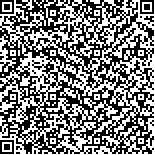| 本文已被:浏览 1027次 下载 856次 |

码上扫一扫! |
| 荷斯坦牛两类性情评定方法分析及其对日产奶量与体细胞评分的影响 |
|
龚睿1,王澳1,施霁桢1,姚鸿钦1,雷斯琪1,刘雪琴1,黄上真1,常瑶1,郭刚2,蒋桂娥3,王雅春1*
|
|
|
| (1.中国农业大学 动物科学技术学院, 北京100193;2.北京首农畜牧发展有限公司, 北京 100029;3. 河北省畜牧良种工作站, 石家庄 050061) |
|
| 摘要: |
| 为探究奶牛性情的影响因素及其对日产奶量和体细胞评分的影响,于2019年7月—8月对北京地区2个牛场1 100头泌乳牛进行了挤奶性情评分和主观性情评分的收集,并通过Logistic回归模型分析奶牛各性情评分的影响因素,利用GLM过程分析各性情评分对日产奶量和体细胞评分的影响,此外,通过计算秩相关系数检验不同性情评分之间的相关性。结果表明:踏步速率评分与踢腿速率评分之间存在极显著相关(P<0.01),但其相关系数较小(r=0.208 7),主观性情评分与2种挤奶性情评分均无显著相关(P>0.05);2个牛场之间的性情评分分布存在差异;不同性情评分方法的影响因素各不相同:对于踏步速率评分,3胎以上荷斯坦牛性情较温顺;对于踢腿速率评分,泌乳天数为306~500 d的荷斯坦牛性情较暴躁;对于主观性情评分,随着泌乳阶段的增加,荷斯坦牛的性情更加温顺;踢腿速率评分对日产奶量具有极显著影响(P<0.01),且踢腿速率评分为2分的荷斯坦牛日产奶量最高,即性情适中的奶牛具有更高的日产奶量;2种奶牛性情评分对体细胞评分均无显著影响。综上,奶牛各性情评分间相关性较低,不同性情评分反映了奶牛在不同环境条件下的不同性情表现。奶牛挤奶性情与产奶量相关,因此改进挤奶性情有助于提高牛场生产管理和经济效益。本研究为将性情评分纳入中国奶牛选择指数,早日实现奶牛平衡育种提供了理论基础。 |
| 关键词: 荷斯坦牛 性情评分 日产奶量 体细胞评分 |
| DOI:10.11841/j.issn.1007-4333.2021.04.06 |
| 投稿时间:2020-09-14 |
| 基金项目:现代农业(奶牛)产业技术体系建设专项资金(CARS-36);农业高质量发展关键共性技术攻关专项(20326303D);河北省现代农业产业技术体系奶牛产业创新团队(HBCT201812020);长江学者和创新团队发展计划(IRT_15R62) |
|
| Analysis of two types of temperament scores and their effects on daily milk yield and somatic cell score in Holstein |
|
GONG Rui1,WANG Ao1,SHI Jizhen1,YAO Hongqin1,LEI Siqi1,LIU Xueqin1,HUANG Shangzhen1,CHANG Yao1,GUO Gang2,JIANG Guie3,WANG Yachun1*
|
| (1.College of Animal Science and Technology, China Agricultural University, Beijing 100193, China;2.Beijing Sunlon Livestock Development Co.Ltd., Beijing 100029, China;3.Hebei Livestock Breeding Station, Shijiazhuang 050061, China) |
| Abstract: |
| To explore the influencing factors of cow temperaments and its influence on daily milk yield(DMY)and somatic cell score(SCS)in Holstein, the milking temperament score and subjective temperament score from 1 100 lactating cows in two herds in Beijing were collected from July to August in 2019. Logistic regression model was used to analyze the factors affecting temperament. Generalize linear model(GLM)was used to analyze the impact of the temperament on DMY and SCS. In addition, the correlation between different temperament scores was calculated by calculating rank correlation coefficient. The results showed that there was a significant correlation between stepping score and kicking speed score(P<0. 01), but the correlation coefficient was small(r=0. 208 7). Subjective temperament score and milking temperament score were not associated(P>0. 05). There were differences in temperament scores distribution in two herds. The influencing factors of different temperament scoring methods were different. For stepping score, temperament score of cows more than 3 births was more gentle. For kicking score, cows in the fourth milking stage(306-500 d)were more irritable. For the subjective temperament score, with increasing days in milk(DIM), the temperament of cattle was more gentle; There was a significant association between kicking score and DMY(P<0. 01), and the cows with the kick score of 2 points had the highest daily milk production, that is, cows with moderate temperament had better yields. The temperament scores of both dairy cows had no significant effect on somatic cell score. (P>0. 05). In conclusion, the correlation between the temperament scores of daily cows is low, and different temperament traits reflect different aspects of dairy cow's temperament under different environmental conditions. Therefore, the improvement of milking temperament is helpful to improve management and economic efficiency on the farm, which provides a theoretical basis for the incorporation of temperament into China Performance Index(CPI)and ultimately realizing balanced breeding of dairy cows. |
| Key words: Holstein temperament score daily milk yield somatic cell score |